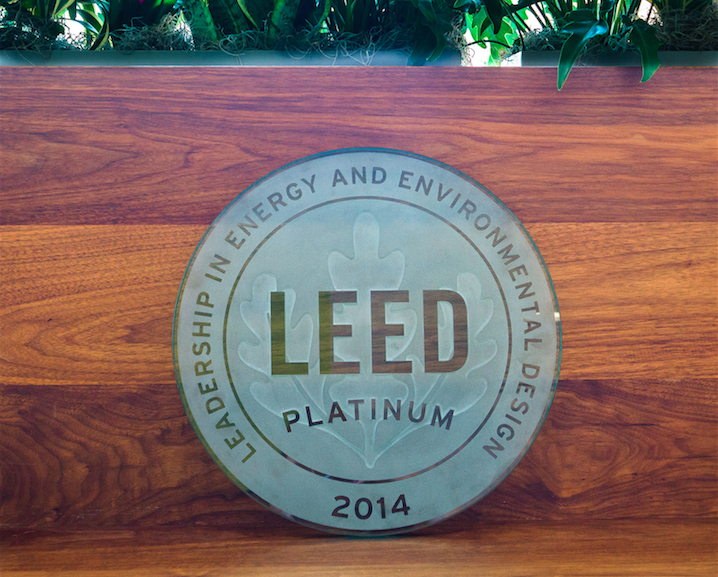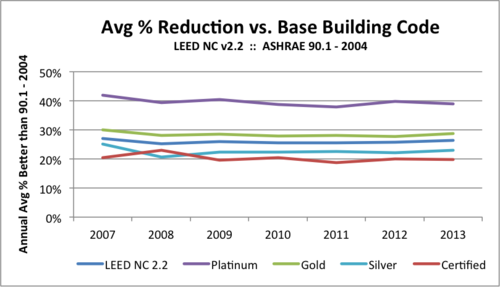Code Green Solutions


Last week, the U.S. Green Building Council and Ember Strategies released the results of a deep dive study into the design energy efficiency of a decade of LEED buildings at the ACEEE’s 2014 Summer Study on Buildings – the biennial gathering of building efficiency nerds in Pacific Grove, CA. Ten years of LEED data shows the evolution of the best in the architecture, engineering, and construction (AEC) industry as they strive for more efficient building designs and a few industry quirks.

Within certification levels, consistent levels of design efficiency are achieved over the life of the rating system.
Basic background: LEED certification is the international language of achievement for green buildings. Buildings are certified at varying levels (from basic Certified to Silver, Gold, and Platinum) based on the number of points they earn across the categories of green building, like energy, water, indoor environment, location, and materials. Having a LEED certification is one of the ways commercial real estate owners prove their building is one of the best in the world as they work to attract tenants. This study looked at the New Construction rating system for building design and construction and specifically certain energy efficiency related credits.
Before digging in to the data, it is important to understand that a LEED rating system is born, it grows, and eventually it dies and is replaced by a new rating system. This is unlike a building code or standard. The LEED rating system is tweaked in each version to raise the bar for achievement, of course, but also to try and fix credits that just aren’t working. If no one achieves a credit, there is no environmental benefit to having it. USGBC uses feedback from the market to improve the rating system over time…